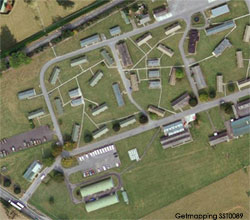Landscapes of Militarism, Commemoration & Defence
 From Medieval castles to Cold War ammunition depots the AONB has a varied history of military activity and now is notably associated with the commemoration of fallen
soldiers, especially in relation to the First World War.
From Medieval castles to Cold War ammunition depots the AONB has a varied history of military activity and now is notably associated with the commemoration of fallen
soldiers, especially in relation to the First World War.
The first nationally organised militarism in the AONB represented by network of Roman roads (see Historic Routeways) and two Roman forts.
Medieval fortifications including motte and bailey castles, fortified manor houses and the ruins of Wardour Castle. Wardour Castle is associated with the English Civil War when it was under seige.
There are a series of Rifle ranges dating from the 19th century onwards.
20th century military activity in the AONB is represented by earthworks associated with Military Railways created during World War One, World War Two and in the Cold War period and evidence for large scale temporary camps established in the First World War at both Fovant and Codford, including slight earthworks representing the camps layouts and at least two surviving huts. Remains from the Second World War including camps at Codford and several air fields, including Zeals at which the control tower survives as a house. World War Two aircraft crash sites which form the focus of local memory and discussions.
There are a nationally important group of Chalk Cap Badges at Fovant and single example from Codford. These symbolise the presence of regiments in the area from the First World War onwards and are the focus for yearly ceremonies.
There are also a series of dedicated War Grave Commission cemeteries associated with War Grave Commission style crosses and inscriptions. These form the focus for yearly ceremonies or remembrance.
Evidence of post 1945 is represented by the now mostly defunct RAF Chilmark, a large complex comprising a light railway, warehouses and underground bomb storage in former stone quarry workings; Knook Camp; and the military camp at Blandford which was first used in the 18th century and is built on the foot print of a 17th century race course.
More information on the military archaeology of the AONB can be accessed by clicking here: Theme 7: Landscapes of Militarism, Commemoration & Defence.
This document forms part of the wider AONB Historic Environment Action Plans.
